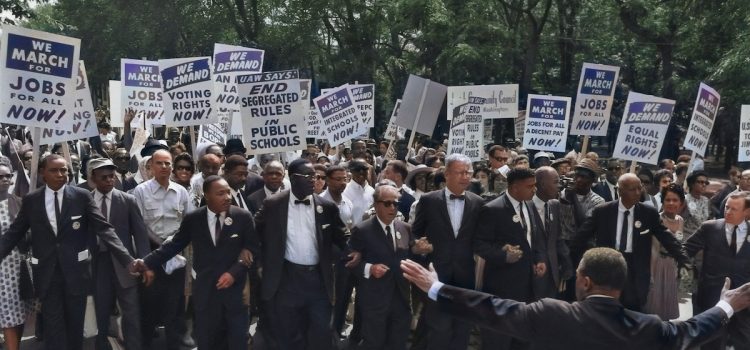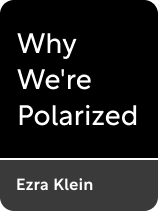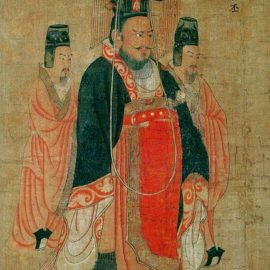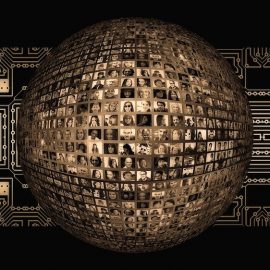

This article is an excerpt from the Shortform book guide to "Why We're Polarized" by Ezra Klein. Shortform has the world's best summaries and analyses of books you should be reading.
Like this article? Sign up for a free trial here.
Was American politics always like this? Did politicians always seek to stir up partisan fervor among their supporters by antagonizing the other side?
According to Ezra Klein, the answer to these excellent questions is “No.” In Why We’re Polarized, he writes that the story of modern polarization is rooted in cleavages in the political system that began in the 1950s and 1960s, during the civil rights era.
Read on for a brief history of political polarization in America.
The History of Political Polarization in America
To understand the polarized political landscape we inhabit today, it’s important to know the history of political polarization in America. Klein takes us back in time to explain how we got here.
Mid-20th Century Politics: Light on Partisanship
Klein writes that, in the mid-20th century, the two major parties were less polarized because their underlying coalitions were far more heterogeneous than they are today. For example, there were lots of liberal Republicans in New England, while conservative white Southerners (“Dixiecrats”) were the backbone of the Democratic Party. The two parties were loose coalitions. This stands in stark contrast to the parties of today, both of which are tightly ideologically disciplined, with little ideological crossover between them.
Because of the less cohesive nature of the two parties, there was lots of cross-partisan political behavior: Major pieces of legislation passed with bipartisan majorities, there were lots of swing voters, and many states frequently shifted back and forth between the parties from election to election.
| Strong Parties as Bulwarks of Democratic Cooperation In How Democracies Die, Steven Levitsky and Daniel Ziblatt write that the institutional strength of the two parties was a major factor in maintaining the bipartisan cooperation that marked American politics until roughly the final third of the 20th century. Although the two parties were loosely organized ideologically, party elites had a strong hand in directing the internal procedures within their parties—specifically in deciding which kinds of candidates did or didn’t get nominated. This institutional strength—in both parties—empowered party leaders to prevent divisive, division-stoking candidates from being nominated. However, the authors write that the two parties lost this gatekeeping ability around the final third of the 20th century, opening the door to a more polarizing style of politics. Specifically, they point to the unintended consequences of the McGovern-Fraser Commission: a panel convened by the national Democratic Party that shifted the party to a system of state-level primaries for the 1972 presidential election. Instead of party leaders choosing their party’s nominee, rank-and-file party members would directly elect delegates to the national convention (where the presidential nominee is selected). This gave voters direct control over the nomination process for the first time. Similar rules were adopted by the Republican Party before the 1972 presidential election. Suddenly, anyone could run for the nomination and largely circumvent the traditional gatekeepers—opening the door for outsiders and extremists to capture major-party nominations. |
The Dominance of the Dixiecrats
Klein writes that to understand this mid-20th century era of bipartisan comity—and how it ended—we need to understand the Dixiecrats. The Dixiecrats—conservative, white, segregationist Southern Democrats—were the backbone of the Democratic Party from the 19th through the mid-20th century. Through their domination of Southern politics, they established a system of authoritarian, one-party rule in the South. Supporting this system was a range of suppressive tactics, ranging from legal disenfranchisement to intimidation, segregation, and violence against African Americans. Klein argues that maintaining this system of racial hierarchy was the chief political goal of the Dixiecrats.
Because they were critical to giving the overall majority to the Democratic Party in Congress, Dixiecrats had great influence in Democratic politics at the national level. And the national Democratic Party—which generally became more progressive and egalitarian in the 20th century—had little choice but to placate its Dixiecrat partners by turning a blind eye to the system of racial apartheid in the South. In practice, Klein writes, this meant that liberal Democrats who wanted to get anything done at the national level—from establishing Social Security and Medicare to passing pro-union legislation—had to accommodate the Dixiecrats.
The Dixiecrats Exit the Democratic Party
Klein writes that the partnership between the Dixiecrats and the rest of the Democratic Party began to change in the mid-20th century as the liberal wing of the Democratic Party began to more aggressively and boldly support civil rights legislation.
The enactment of the 1964 Civil Rights Act and the 1965 Voting Rights Acts (passed by a Democratic Congress and signed by Democratic President Lyndon Johnson) were watershed moments in American political history. The Democrats were now the national party of civil rights, which deeply alienated the Dixiecrat wing of the party.
This, observes Klein, was the beginning of the great ideological reshuffling of the two parties, as conservative white Southerners started their long exodus from the Democratic Party into the Republican Party. The GOP proved a welcome home for them, as the former Dixiecrats—alarmed by the threat of federal desegregation efforts—suddenly found the anti-government ideology of conservative Republicans highly appealing.
Our Hyper-Polarized Present
In the 2020s, writes Klein, we’re experiencing the culmination of this process. Over the decades, politics became sorted along ideological and racial lines: Conservative white Christians migrated to the Republican Party, while liberal, multiethnic, secular voters increasingly found their political home in the Democratic Party. The result is a political landscape in which nearly all voters are neatly ideologically sorted into one political party or the other.
(Shortform note: Some political science data suggests that swing voters still exist, albeit in much smaller numbers than in the past, and that they still play a decisive role in the outcome of elections. However, these voters are rarely “moderates” in the sense that they hold economic and social policy views that sit between those of the two major parties. Instead, they tend to have a grab-bag of ideologies that don’t neatly align along the traditional liberal-conservative axis. Many are economically liberal and socially conservative, while a smaller number are economically conservative and socially liberal. Similarly, they may have extreme policy views on one issue and moderate views on another.)

———End of Preview———
Like what you just read? Read the rest of the world's best book summary and analysis of Ezra Klein's "Why We're Polarized" at Shortform.
Here's what you'll find in our full Why We're Polarized summary:
- Why bipartisan cooperation is becoming increasingly difficult in the US
- The origins of modern political polarization and its impacts on the parties
- Ideas for how we might depolarize our politics






